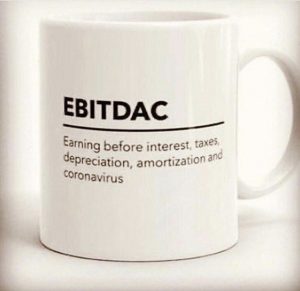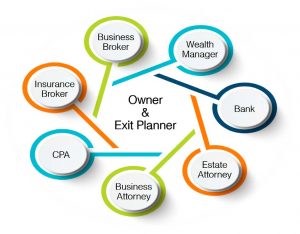What is Your Exit Plan?
If you’ve ever done a business plan for the purpose of raising capital, one of the key questions is “What is your exit plan?” Many business owners think that question is self-serving, intended merely to let the venture capitalists figure when and how they will get their return on investment. In truth, however, that question is far more important.
An exit plan is a strategic plan with an end date. Putting a time frame on your plan, and defining the goals to be achieved by that date, creates a future-focused mindset for the owner. It controls and reduces your tendency to prioritize daily firefighting over long term thinking. It provides you with a yardstick to measure progress. Most importantly, it affects your thinking about almost everything in your business.
Here are the 3 inarguable reasons why you should start your exit plan now.
Reason #1: It’s Never Too Soon
 In my years of working with business owners, I’ve helped many transfer their businesses to family and employees. I’ve worked with others who sold their companies to a third party for tens of millions of dollars.
In my years of working with business owners, I’ve helped many transfer their businesses to family and employees. I’ve worked with others who sold their companies to a third party for tens of millions of dollars.
Surveys show that many owners have regrets afterward. Others happily move into the next phase of their lives or careers. A few have seller’s remorse. On the other end of the spectrum, some come to the realization that they hated their business owner lives for years. The majority feel that they received a reasonable reward for monetizing their work of decades.
None of them. NOT ONE of them, has ever said “I spent too much time planning.”
It’s likely that the sale of your business will be the most important financial event of your life. There are a few lucky owners who have wealth outside or beyond the value of their businesses, but for most of us monetizing those decades of effort is the culmination of our working careers.
If your exit plan is to transfer to family, you can choose vehicles like Grantor Retained Annuity Trusts (GRAT) or Self Cancelling Installment Notes (SCIN). These may have to be in place for years to substantially reduce or eliminate taxable proceeds for you and/or your heirs.
In a sale to employees, developing the documentation that shows their assumption of managerial responsibilities over time is a basic qualification for SBA loan approval. That, plus developing their “down payment” equity, punches the ticket for you to walk away with your proceeds in pocket on the same day that you cede control of the company.
In a sale to third parties, the condition of the financial markets at your time of exit will decide the size of your multiple. Preparing your business with due diligence in mind, and understanding the different classes of buyers, (see my post on identifying a buyer) allows you to better choose the time, method and proceeds of your transition.
Although it is difficult to time the stock market, shifts in acquisition multiples take much longer to develop. Being prepared allows you to enter the market while prices are at a peak.
Five years is a reasonable planning time. Ten years is better. There is no time frame that’s “too far out” to be thinking about your exit.
Reason # 2: It Changes Your Thinking
It’s difficult to run a business without being reactive. Employee issues, customer problems, and vendor policies can shift your priorities on a daily basis.
When your exit plan is in place, you have a broader perspective. Every decision you make is now in the context of “Does this support my bigger picture?” There are numerous examples.
Hiring: If your exit plan is to pass the business on to your children, then hiring becomes a support function. You look for employees who can fill in areas where your offspring lack the necessary skills, or don’t have an interest.
If you plan to sell to employees, then you are looking for a Successor in Training (SIT). That is someone who shares many characteristics with you. If you are selling to a third party, you want a Second in Command (SIC). That is someone who compliments your strengths, and who can be contractually incented to stay on the job with a new owner. (See my piece on SIT vs. SIC here.) Securing a management team adds considerable value to any company.
Lease vs. Buy: If your plan calls for selling to someone who is likely to relocate the company, or who already has your production capabilities, you may want capital equipment to be easily disposable. A competitor or much larger acquirer may want to leave the equipment out of the transaction. In a Main Street business, you may choose to have a strong tangible asset base for an entrepreneurial owner to use when obtaining acquisition financing.
Real Estate: Should you own your building? Some buyers (say a publicly-traded acquirer) prefer to lease space. In that case, owning your building could provide a post-transition income stream in your retirement.
On the other hand, a relocated company could stick the owner/landlord with a special purpose building that requires significant remodeling to be rentable.
These are just a few of the decisions that are better made in the context of your long term plan. The decisions you are making in your business today all have lasting implications.
Reason #3: A Plan is not an Action
 If you are taking a long trip, you likely determine the route before you start out. If it is complex, you may print out the directions. Nonetheless, you are still likely to use a wayfinding app to alert you to problems along the way, like traffic jams or construction.
If you are taking a long trip, you likely determine the route before you start out. If it is complex, you may print out the directions. Nonetheless, you are still likely to use a wayfinding app to alert you to problems along the way, like traffic jams or construction.
But everyone understands that printing out the directions isn’t the same as beginning the journey. You might take that step days or even weeks before actually getting into your car.
It’s the same with your exit plan. Choosing your time frame and preferred method of transition isn’t the same as making it happen. Writing it down is a key component of preparation, but it shouldn’t be confused with implementation.
Starting Your Exit Plan
Venture capitalists ask an entrepreneur “What is your exit plan?” because the answer shows that he or she has thought through the implications of their decisions. They have built the business with a purpose beyond merely growing or getting through the next cycle. It shows that the allocation of resources, the selection of personnel, and choices in product and service offerings are coordinated.
There will be obstacles along the way. Your strategy may shift to compensate for new technology or changing market tastes. As the company grows in your chosen direction, you could just be having too much fun to leave on your originally planned date.
But those changes will be conscious. You will see how new factors fit with your plan, and when they don’t. Course adjustments keep the goal in mind. Alternatively, you understand when the goals themselves have to change.
For years, clients have asked me “What should I do to increase the value of my business?” My answer is always the same. “Exactly the same things that you should be doing to improve your business every day.”
Stephen Covey coined the axiom “Begin with the end in mind.” Yogi Berra said “If you don’t know where you are going, you may wind up somewhere else.”
Your exit plan is the road map to your eventual financial security. It doesn’t have to be a huge undertaking. All plans begin with where you are now. You already have the company, the management team, the customers, and the products or services. You’ve likely thought about how you would like to finish. What’s left is just putting the two together.
The sooner you go through the exercise, the sooner your company will be a component of your exit plan, rather than a distraction from it.
John F. Dini, CExP, CEPA is an exit planning coach and the President of MPN Incorporated in San Antonio Texas. He is the publisher of Awake at 2 o’clock, and has authored three books on business ownership. If you want to see how prepared you are for transition, take the 15-minute Assessment at www.YourExitMap.com
 One of the questions we often hear from business owners is, “What is the difference between Succession Planning and Exit Planning? Aren’t they the same thing?” Surprisingly, they are not. The next question usually is, “Which one do I need?” The answer is simple. Whether the business is small or large, family-owned or not, astute business owners always need both.
One of the questions we often hear from business owners is, “What is the difference between Succession Planning and Exit Planning? Aren’t they the same thing?” Surprisingly, they are not. The next question usually is, “Which one do I need?” The answer is simple. Whether the business is small or large, family-owned or not, astute business owners always need both. Nearly $10 trillion dollars in business assets will be transferred globally in the next decade, according to Forbes Magazine. Baby Boomers selling privately owned businesses or transferring them to family members will comprise much of that $10 trillion dollar transfer. As the market becomes crowded with owners ready to sell, the advantage will go to those owners who have done their due diligence, considered all of their options, and planned for unexpected contingencies.
Nearly $10 trillion dollars in business assets will be transferred globally in the next decade, according to Forbes Magazine. Baby Boomers selling privately owned businesses or transferring them to family members will comprise much of that $10 trillion dollar transfer. As the market becomes crowded with owners ready to sell, the advantage will go to those owners who have done their due diligence, considered all of their options, and planned for unexpected contingencies. In my years of working with business owners, I’ve helped many transfer their businesses to family and employees. I’ve worked with others who sold their companies to a third party for tens of millions of dollars.
In my years of working with business owners, I’ve helped many transfer their businesses to family and employees. I’ve worked with others who sold their companies to a third party for tens of millions of dollars. If you are taking a long trip, you likely determine the route before you start out. If it is complex, you may print out the directions. Nonetheless, you are still likely to use a wayfinding app to alert you to problems along the way, like traffic jams or construction.
If you are taking a long trip, you likely determine the route before you start out. If it is complex, you may print out the directions. Nonetheless, you are still likely to use a wayfinding app to alert you to problems along the way, like traffic jams or construction. A bleak joke, but one that is on the minds of many business owners, especially Baby Boomers in their late 50s and 60s. Many were postponing their exit planning because business has been so good. As one client told me, “In March we had the best year in the history of my company. It looks like April might be the worst.”
A bleak joke, but one that is on the minds of many business owners, especially Baby Boomers in their late 50s and 60s. Many were postponing their exit planning because business has been so good. As one client told me, “In March we had the best year in the history of my company. It looks like April might be the worst.” It may be dramatic and immediate, or it may be only obvious afterwards when your performance is matched against that of your peers.
It may be dramatic and immediate, or it may be only obvious afterwards when your performance is matched against that of your peers.
 The exit planner may not be as skilled in any specific discipline as the others on the team. He may know something about tax planning, or legal structuring or insurance. She probably knows a bit about valuation and even more about contracts.
The exit planner may not be as skilled in any specific discipline as the others on the team. He may know something about tax planning, or legal structuring or insurance. She probably knows a bit about valuation and even more about contracts.